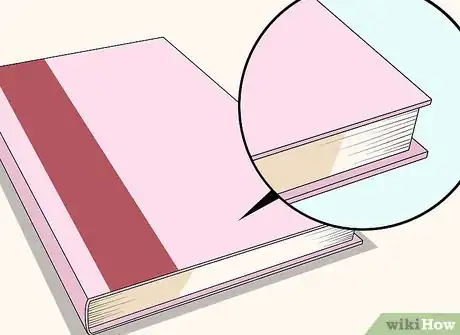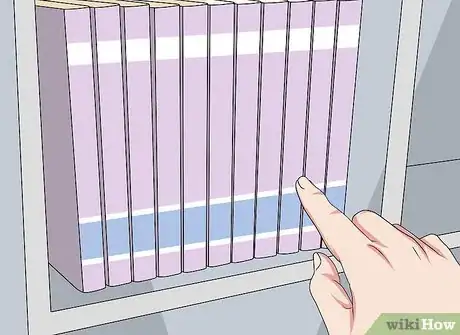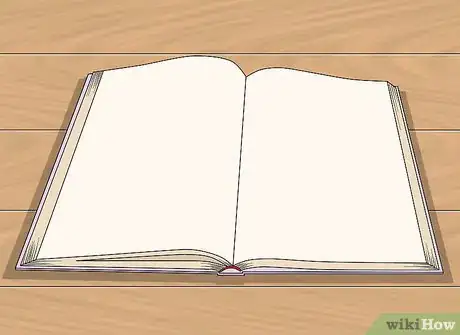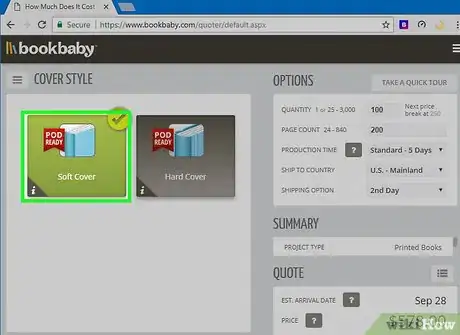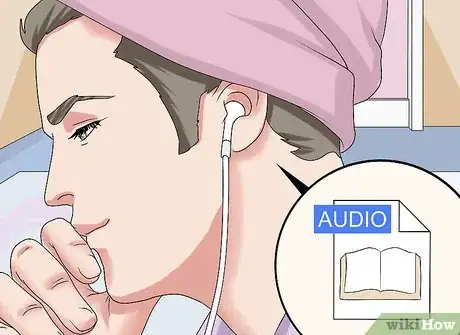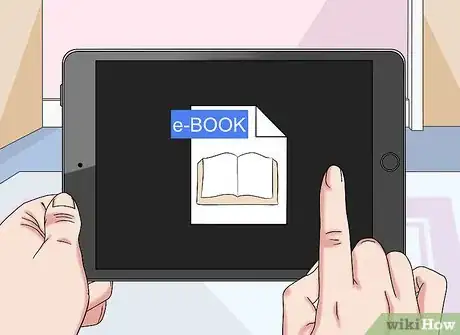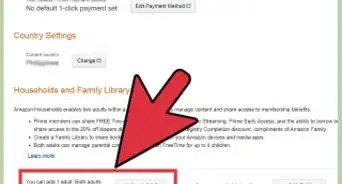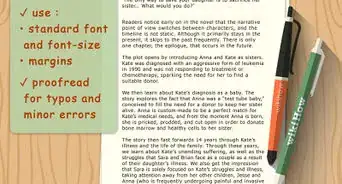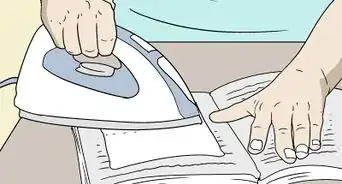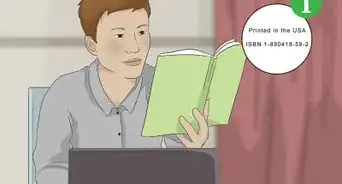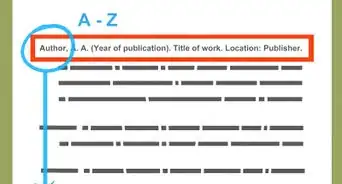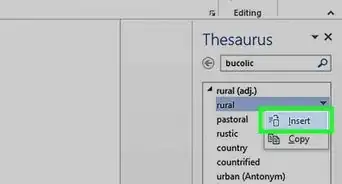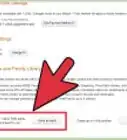This article was co-authored by wikiHow Staff. Our trained team of editors and researchers validate articles for accuracy and comprehensiveness. wikiHow's Content Management Team carefully monitors the work from our editorial staff to ensure that each article is backed by trusted research and meets our high quality standards.
There are 10 references cited in this article, which can be found at the bottom of the page.
This article has been viewed 706,702 times.
Learn more...
If you’ve ever tried to purchase a book, you’ve probably been confronted with the age-old question that plagues bibliophiles everywhere: paperback or hardback? Both formats have their benefits and drawbacks, and understanding those will help you make a choice and get reading!
Steps
Choosing Based on Cost and Purpose
-
1Save money by buying paperback. As all readers on a budget know, paperback is the cheapest option out there. Trade paperbacks may be up to $10-$15 cheaper. Mass-market versions, which are the cheaply made “short and fat” editions, may even cost less than $10.[1]
-
2Buy hardback if you want to read the book as soon as it’s released. Most books are first released as hardbacks, then re-released in a paperback form a few months later as a marketing boost. If you’ve been waiting and waiting for a book to come out, treat yourself with the more expensive copy so you can devour it right away.[2]Advertisement
-
3Choose paperback if you’ll be reading while traveling. Lightweight and floppy, paperbacks are great for plane and car rides or even your daily commute. Stash a paperback in your bag or even in your back pocket if you’ll have downtime to do some reading during the day.[3]
-
4Choose hardback if you plan to keep it for a long time. Hardbacks are built to last, able to withstand both daily wear and tear and the test of time. Paperbacks are easier to rip, wrinkle and stain, and over time, the glue of the spine may weaken or the paper start to deteriorate. If you’d rather not dedicate all that time and effort to preserving a paperback, choose a longer-lasting hardcover.[4]
-
5Buy a hardback as a gift. If you’re gifting a book to a friend or family member, try to go for a hardback edition. They look nicer and feel more satisfying to open as a gift, and your loved one will appreciate that you sprung for the fancier version.[5]
- Don’t worry if you don’t have the funds for a hardback copy, or if it’s out of stock. The most important thing is that you’ve chosen a good book for your loved one to enjoy!
Choosing Based on Look and Feel of the Book
-
1Choose a cover to match the other books on your shelf. Some readers love to have all their books be the same height--it just looks better on the shelf, don’t you think? Paperbacks tend to range more in height, so for an even shelf look, go with the more consistent hardback editions.[6]
- Trade paperbacks will sometimes be released in a hardback-style height, so check the measurements of your shelf and your other books before you completely rule out a paperback. If the height matches, you can save a couple dollars while maintaining the even line of your bookshelf.
-
2Choose an edition to match the others in a series. If the book you’re buying is part of a series, try to keep it consistent. If the rest of the series is in hardcover, buy a hardcover; if the other books are paperback, go with paperback. Aesthetically-minded book lovers almost universally agree that it looks better on the shelf!
-
3Buy a paperback for ease of holding. Thanks to their lighter weight and smaller size, paperbacks are easier to hold with one hand. You can easily read them while relaxing in bed or on the couch, or while holding onto a strap or pole on the subway.[7]
-
4Choose a hardback for the ease of laying it flat. Some paperbacks may pose a problem if you don’t like to break the spine of a book, which gives it long vertical wrinkles; you may find yourself barely cracking it open to preserve that smooth spine, which can make it difficult to actually read! The hardier covers of hardback books make this a non-issue. You can easily lay the book flat to read on a table or on your lap.[8]
-
5Choose the version with a more appealing cover. Hardbacks in particular are known for their gorgeous designs. Even if a hardback version isn’t considered a “special edition,” you may still get beautiful art on the dust jacket, the cover under the jacket, and even on the pages that isn’t available in a paperback version. On the flipside, sometimes the paperback cover of a book will appeal to you more! If aesthetics are your main concern, simply go with whatever book strikes your fancy.[9]
Self-publishing in Paperback or Hardback
-
1Self-publish in hardback to appeal to critics and aesthetic readers. Publishing your book in hardback will be expensive, but many readers may love the higher quality. It also might help your book get picked up by news outlets and book critics, who are more likely to consider a hardback as a more “literary” work--unfair as that may be![10]
-
2Choose a trade paperback for good quality at a low price. Trade paperbacks are still weighty, about the same size as hardbacks, and printed on good paper. They have the advantage of quality craftsmanship coupled with a lower price than a hardback edition. The book still looks good, so it can appeal to readers who are on a budget but still care about a book’s appearance.[11]
-
3Save the most money by opting for a mass-market paperback. A small, mass-market edition will be the cheapest to buy and produce. They may not look as good as hardback or trade paperback versions, but publishing companies consider mass-market copies as great ways to introduce new authors and help them grow their readership.[12]
-
4Consider e-publishing. This is a rapidly-growing medium that will expose you to many different readers online and help you conserve even more money by saving on printing costs. You may not get the satisfaction of holding the physical book in your hands, but remember that e-publishing can serve as a stepping stone to print publishing. You’re on your way!
Considering Alternate Ways to Read
-
1Choose an audiobook to read as you multi-task. Listen to an audiobook as you drive or do chores around the house, or close your eyes and let it lull you to sleep. Though you don’t get the feeling of holding the book and moving your eyes down the page, an audiobook is a great option for busy readers who like to squeeze in their book-time wherever they can get it.
-
2Try an e-reader for the ultimate convenience. E-readers are perfect for the traveling book lover; you can store an entire library in a tablet that fits in the palm of your hand and buy books easily while on-the-go. They’re also more accessible to visually-impaired readers, thanks to the multiple letter size and line-spacing options available. E-books are also typically cheaper than paperback or hardback copies, though some readers may prefer the human touch of holding a physical book and turning the pages.[13]
- Buy non-light-emitting e-reader to prevent strain or fatigue on your eyes.
-
3Use a reading app on your phone to read anytime, anywhere. Another great option for a reader on-the-go, reading apps such as iBooks or the Amazon Kindle app are often free (although you’ll have to buy the books themselves, of course!). These are excellent options if you’re unexpectedly stuck somewhere and didn’t bring along a book or e-reader, or don’t have room to tote along a book while you’re commuting or running errands.
Community Q&A
-
QuestionShould I get hardcover or paperback? Which one will last the longest?
 Harshida kapadiaCommunity AnswerA hardcover book is bound with a thick cover that protects the internal pages well because they cannot be bent outside the cover.
Harshida kapadiaCommunity AnswerA hardcover book is bound with a thick cover that protects the internal pages well because they cannot be bent outside the cover. -
QuestionI can't decide whether to get hardback or paperback for a particular book I love. Can you help?
 Mzm555Top AnswererAs per the article, it really depends on your reading habits and personal preferences. Need a durable book to withstand a lot of wear and tear, to be put in a backpack, to be read while traveling on a train, bus, car, etc? Go hardback. Do you need a lightweight, smaller book, which will be comfortable to read while relaxing on the couch or lying in bed? Go paperback.
Mzm555Top AnswererAs per the article, it really depends on your reading habits and personal preferences. Need a durable book to withstand a lot of wear and tear, to be put in a backpack, to be read while traveling on a train, bus, car, etc? Go hardback. Do you need a lightweight, smaller book, which will be comfortable to read while relaxing on the couch or lying in bed? Go paperback. -
QuestionWhat is a compact version book?
 Community AnswerA compact version book is just an edition of the same book but with less information. The book is usually summarized to make it brief or fit a certain condition. Meaning it has fewer pages but covers roughly the same material.
Community AnswerA compact version book is just an edition of the same book but with less information. The book is usually summarized to make it brief or fit a certain condition. Meaning it has fewer pages but covers roughly the same material.
References
- ↑ https://www.barnesandnoble.com/blog/hardcovers-vs-paperbacks/
- ↑ https://www.economist.com/blogs/economist-explains/2014/10/economist-explains-15
- ↑ https://www.youtube.com/watch?v=mBzkrpTS3vY&feature=youtu.be&t=1m11s
- ↑ https://www.biblio.com/book-collecting/care-preservation/preserving-paperbacks/
- ↑ https://www.barnesandnoble.com/blog/hardcovers-vs-paperbacks/
- ↑ https://www.youtube.com/watch?v=mBzkrpTS3vY&feature=youtu.be&t=1m51s
- ↑ https://www.barnesandnoble.com/blog/hardcovers-vs-paperbacks/
- ↑ https://www.youtube.com/watch?v=mBzkrpTS3vY&feature=youtu.be&t=2m42s
- ↑ https://www.youtube.com/watch?v=mBzkrpTS3vY&feature=youtu.be&t=4m3s
- ↑ http://www.stevenpressfield.com/2015/05/hardbacks-vs-paperbacks/
- ↑ http://www.stevenpressfield.com/2015/05/hardbacks-vs-paperbacks/
- ↑ https://www.publishersweekly.com/pw/by-topic/industry-news/bookselling/article/64595-mass-market-paperback-not-dead-yet.html
- ↑ http://www.cbsnews.com/news/kindle-nook-e-reader-books-the-best-way-to-read/
About This Article
If you want to read a book as soon as it’s released, you’ll have to purchase a hardback copy. If you can wait a few months, buying a paperback will save you between $10 and $15. Spring for a hardback book if you want something fancy to display on a shelf, keep for a long time, or give as a present. Look for a paperback copy if you need something light to hold in your hands or read during travel. To decide whether you should self-publish in paperback or hardback, read on!

